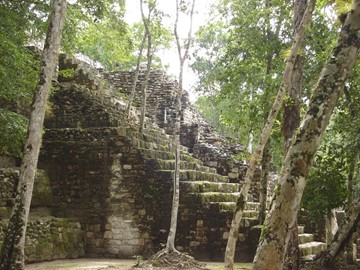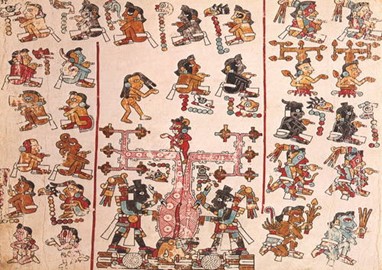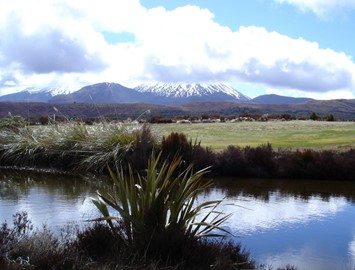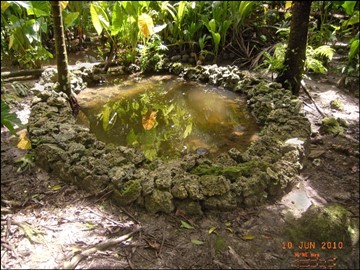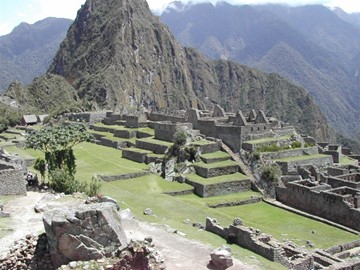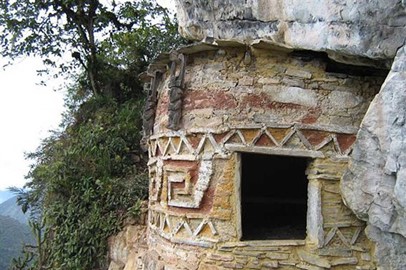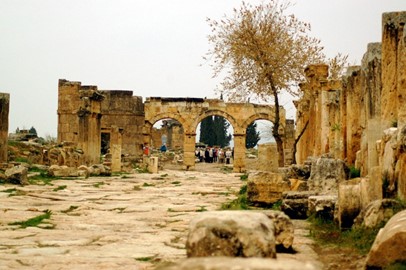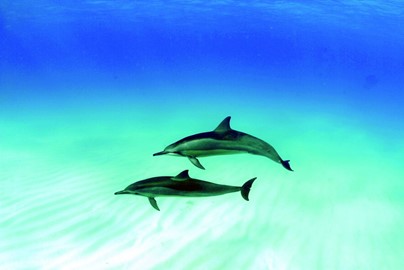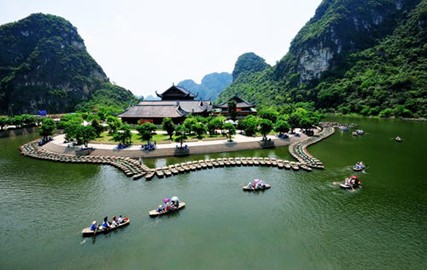category :: mixed
Calakmul
Calakmul, a UNESCO World Heritage site in Mexico, is an ancient Maya city hidden deep within the jungle, renowned for its impressive pyramids, stelae, and intricate carvings that offer a glimpse into Maya civilization at its peak. Flourishing between the 6th and 8th centuries, it was a major political and cultural center, rivaling Tikal in power and influence. The site features over 6,000 structures, including one of the tallest pyramids in the Maya world, and is surrounded by a vast biosphere reserve teemi... Read More
Tehuacán Cuicatlán Valley
The Tehuacán-Cuicatlán Valley, a UNESCO World Heritage site in Mexico, is a biodiversity hotspot renowned for its unique ecological and cultural significance. This arid region features one of the richest concentrations of columnar cacti in the world and evidence of early human agriculture, including the domestication of crops like maize dating back over 5,000 years. Its fossil deposits, ancient water management systems, and archaeological sites highlight its importance as a cradle of Mesoamerican civilizati... Read More
Tongariro
Tongariro National Park, a World Heritage site in New Zealand, is renowned for its stunning volcanic landscapes and cultural significance. Established in 1887, it features active volcanoes, including Mount Tongariro, Mount Ngauruhoe, and Mount Ruapehu, which offer dramatic scenery and diverse ecosystems. The park holds deep spiritual importance to the Māori people, reflected in its designation as one of the world’s first dual World Heritage sites for both natural and cultural value. Visitors can explore its... Read More
Ohrid
The Ohrid region, a UNESCO World Heritage site spanning Albania and Macedonia, is renowned for its unique blend of natural beauty and cultural significance. Lake Ohrid, one of Europe’s oldest and deepest lakes, anchors the area with its crystal-clear waters and rich biodiversity. The region boasts a wealth of historical treasures, including ancient churches, monasteries, and archaeological sites that reflect its Byzantine and Ottoman influences. This picturesque destination attracts visitors with its serene... Read More
Rock Islands Southern Lagoon
Rock Islands Southern Lagoon, a UNESCO World Heritage site in Palau, is a stunning marine landscape featuring over 400 limestone islands covered in lush vegetation, surrounded by turquoise waters and vibrant coral reefs. This unique ecosystem supports an extraordinary biodiversity, including diverse marine life, rare species like the dugong, and extensive seagrass beds. Its geological formations, shaped by ancient coral reefs and erosion, offer a glimpse into millions of years of natural history. The site a... Read More
Machu Picchu
Machu Picchu, a World Heritage site in Peru, is a remarkably preserved 15th-century Inca city nestled high in the Andes Mountains. Built with precise stonework, it features terraces, plazas, and residential structures that showcase advanced engineering and architectural skill. Discovered in 1911 by Hiram Bingham, it offers insights into Inca civilization and attracts visitors worldwide for its historical significance and stunning scenery.
Río Abiseo
Río Abiseo National Park, a UNESCO World Heritage site in Peru, is renowned for its exceptional biodiversity and archaeological significance. This protected region harbors a rich variety of flora and fauna, including rare species like the yellow-tailed woolly monkey. The park also contains over 30 pre-Columbian archaeological sites, most notably the Gran Pajatén ruins, offering valuable insights into ancient Andean civilizations. Its remote location and pristine ecosystems make it a critical conservation ar... Read More
Ibiza
Ibiza, a UNESCO World Heritage site in Spain, is renowned for its rich biodiversity and vibrant cultural heritage. The island features unique ecosystems, including Posidonia oceanica seagrass meadows, which support diverse marine life and contribute to its ecological significance. Its cultural landscape reflects a blend of Phoenician, Roman, and medieval influences, evident in historic fortifications, archaeological sites, and traditional practices that have shaped its identity over centuries. This combinat... Read More
Laponian Area
This UNESCO World Heritage site in northern Sweden, within the Arctic Circle, spans 9,400 square kilometers of pristine wilderness, encompassing mountains, forests, rivers, and lakes across four national parks and two nature reserves. Recognized in 1996 for its natural beauty and cultural significance, it showcases ongoing geological processes and rich biodiversity while serving as a vital area for the indigenous Sámi people, who maintain their ancestral tradition of reindeer herding through seasonal migrat... Read More
Goreme and Rock Sites of Cappadocia
Göreme and the Rock Sites of Cappadocia, a UNESCO World Heritage site in Turkey, feature a surreal landscape of fairy chimneys, rock formations, and extensive underground cities carved into volcanic tuff. This historic region showcases a unique blend of natural wonders and human ingenuity, with ancient rock-cut churches, monasteries, and homes adorned with Byzantine frescoes. Its geological marvels and cultural significance make it a remarkable testament to early Christian and medieval life.
Hierapolis Pamukkale
Hierapolis-Pamukkale, a UNESCO World Heritage site in Turkey, is renowned for its stunning natural and historical features. The site boasts gleaming white travertine terraces formed by calcium-rich thermal springs cascading down a hillside, creating a surreal, cotton-like landscape. Adjacent to this natural wonder lies the ancient Greco-Roman city of Hierapolis, founded in the 2nd century BCE, featuring well-preserved ruins such as a theater, necropolis, and the sacred Plutonium cave associated with the und... Read More
St. Kilda
St. Kilda, a UNESCO World Heritage site in the UK, is a remote archipelago renowned for its dramatic cliffs, abundant seabird colonies, and unique cultural history. Evacuated in 1930, it preserves evidence of over 2,000 years of human occupation, including ancient stone structures and a medieval village. Its isolation in the North Atlantic has fostered a pristine ecosystem, making it a critical haven for species like puffins and gannets. Today, it stands as a testament to both natural beauty and resilient h... Read More
Ngorongoro
Ngorongoro, a UNESCO World Heritage site in Tanzania, is a breathtaking natural wonder renowned for its massive volcanic caldera, formed millions of years ago. This unique ecosystem supports a diverse array of wildlife, including the 'Big Five' (lion, leopard, elephant, buffalo, and rhinoceros), making it a prime destination for safari enthusiasts. The site also holds significant archaeological value, with evidence of early human ancestors dating back over three million years, offering a glimpse into our ev... Read More
Papahanaumokuakea
Papahānaumokuākea is a UNESCO World Heritage site northwest of the main Hawaiian Archipelago, recognized for its cultural and natural significance. It encompasses a vast region of islands and atolls in the Pacific Ocean, serving as a critical habitat for numerous endangered species, including seabirds, turtles, and monk seals. The site also holds deep cultural importance to Native Hawaiians, featuring ancient archaeological sites and embodying traditional ecological knowledge. Its remote location and protec... Read More
Trang An
The Trang An Landscape, a UNESCO World Heritage site in Vietnam, is a stunning blend of natural and cultural wonders. Recognized in 2014 as the country’s first mixed heritage site, it features dramatic limestone karst peaks, lush rainforests, and a network of subterranean waterways navigable by boat. Archaeological evidence reveals human activity spanning over 30,000 years, while historical sites like the ancient capital of Hoa Lu highlight its significance from the 10th and 11th centuries. This picturesque... Read More
